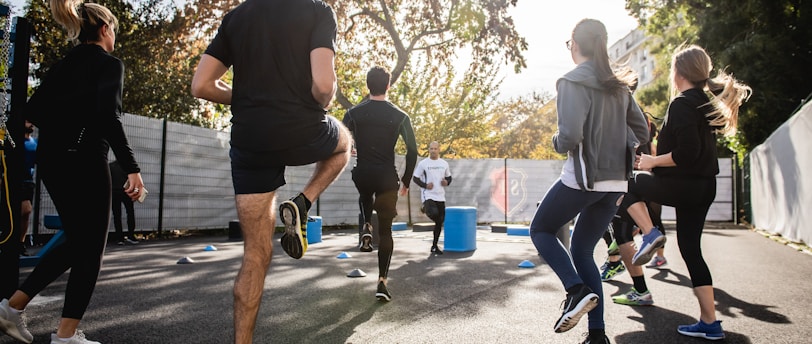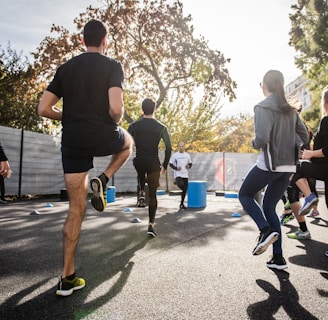The Ultimate Guide to Proper Warm-Up Techniques for Effective Workouts
Learn the essential steps to warm up effectively before your workout sessions to enhance performance and prevent injuries. Discover expert tips and techniques for a safe and productive fitness regimen.
Dirgha Mehta
6/24/20243 min read


In the pursuit of a fit and healthy lifestyle, warming up properly before diving into your workout is often overlooked but crucial. Whether you're a seasoned gym-goer or just starting out, understanding how to warm up correctly can significantly impact your performance and prevent injuries. Let's delve into the key principles and techniques that make up an effective warm-up routine.
Understanding the Importance of Warm-Up
Before delving into the specifics, it's essential to grasp why warming up is necessary. A proper warm-up serves several purposes:
Increased Muscle Temperature: Warm-up exercises increase muscle temperature, which enhances muscle elasticity and reduces the risk of strains and injuries.
Improved Joint Flexibility: Gentle movements during warm-up improve joint flexibility, making it easier to perform exercises with proper form.
Mental Preparation: It mentally prepares you for the upcoming workout, improving focus and readiness.
Enhanced Performance: A good warm-up primes your cardiovascular system, ensuring your body is ready to handle more intense physical activity.
Components of an Effective Warm-Up
Cardiovascular Warm-Up
Begin with 5-10 minutes of light cardio such as jogging, brisk walking, or cycling. This raises your heart rate gradually and increases blood flow to the muscles, preparing them for more vigorous activity.
Dynamic Stretching
Contrary to popular belief, static stretching (holding a stretch for an extended period) isn't ideal for warm-ups. Instead, opt for dynamic stretches that involve controlled movements through a full range of motion. Examples include leg swings, arm circles, and walking lunges. Dynamic stretching helps improve flexibility, mobility, and muscle coordination without compromising muscle strength.
Sport-Specific Movements
After dynamic stretching, incorporate movements specific to your workout. For instance, if you're preparing for a chest workout involving bench presses, start with lighter weights and perform a few sets with higher repetitions to activate the muscles you'll be targeting.
Practical Tips for Effective Warm-Up
Gradual Progression
Start with lighter weights or easier variations of exercises before progressing to heavier weights or more challenging movements. This gradual approach allows your body to adjust and reduces the risk of injury.
Listen to Your Body
Pay attention to how your body feels during warm-up sets. They should feel easy and prepare you for the main workout. If a warm-up set feels too challenging, dial it back to prevent fatigue.
Proper Rest Intervals
Between warm-up sets, allow adequate rest (typically 1-2 minutes) to recover fully. This ensures you perform each set effectively without being overly fatigued.
Incorporate Mobility Drills
Include mobility exercises that target specific areas prone to stiffness or tightness, such as hip flexors, shoulders, and lower back. This helps improve overall flexibility and movement efficiency during workouts.
Example Warm-Up Routine
Let's break down a sample warm-up routine for a chest workout:
Cardiovascular Warm-Up: 5 minutes of brisk walking or light jogging on the treadmill.
Dynamic Stretching: Perform 10 reps each of leg swings (front to back and side to side), 10 arm circles in both directions, and 10 walking lunges per leg.
Warm-Up Sets: If your working weight for bench press is 200 pounds, your warm-up might include:
Set 1: 15-20 reps at 50% (100 pounds)
Set 2: 12-15 reps at 75% (150 pounds)
Adjusting Warm-Up Based on Fitness Level
Your warm-up routine may vary depending on your fitness level and the intensity of your workout. Beginners or those new to exercise may require more extensive warm-up sessions compared to seasoned athletes. Always tailor your warm-up to suit your individual needs and workout goals.
Conclusion
In conclusion, a proper warm-up routine is not just a preliminary activity but a crucial component of any effective workout regimen. By taking the time to warm up adequately, you prepare your body physically and mentally for the challenges ahead while significantly reducing the risk of injuries. Incorporate these principles and techniques into your fitness routine to maximize your performance and achieve your fitness goals safely.
Remember, the key to a successful workout starts with a solid warm-up!
ADDRESS
661 Sulphur Springs Ave.
Bronx, NY 10465
